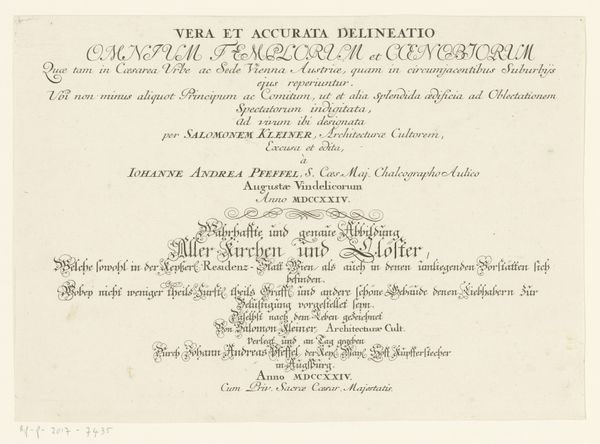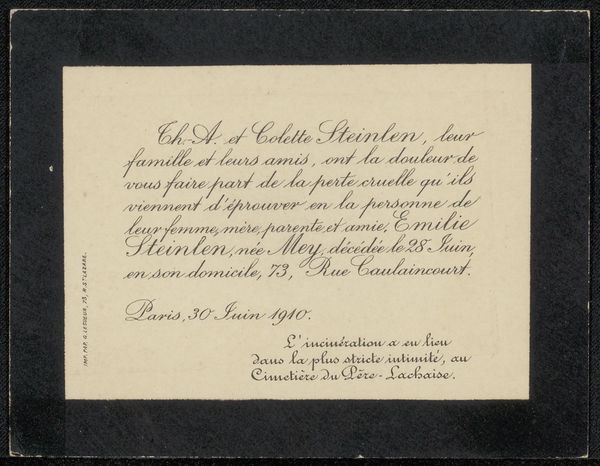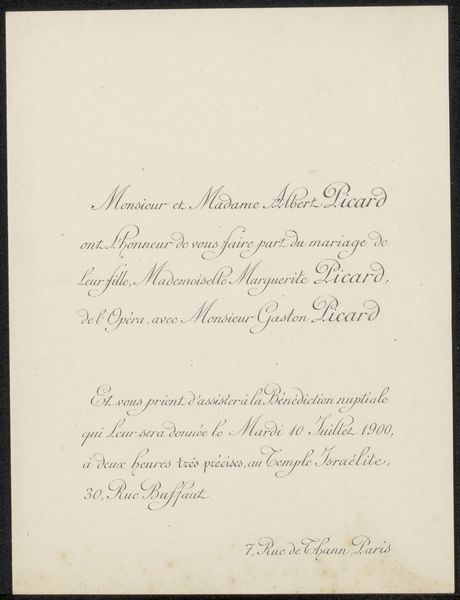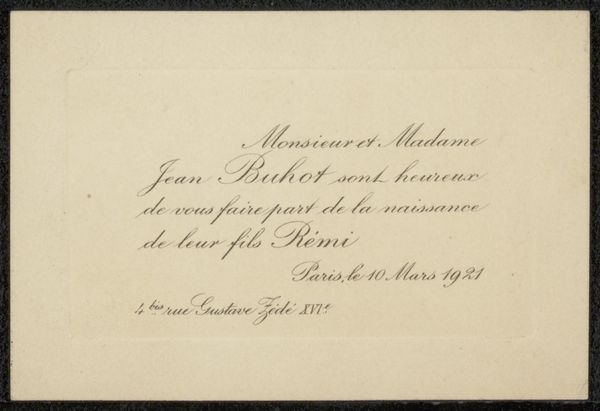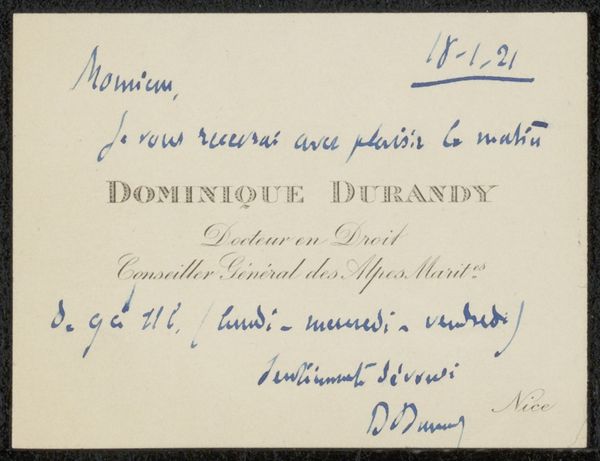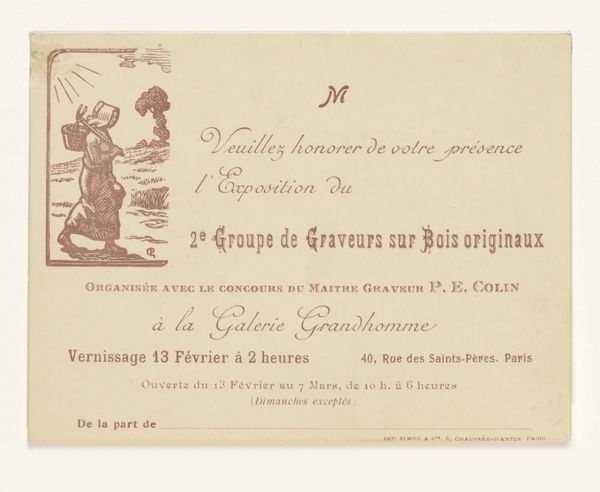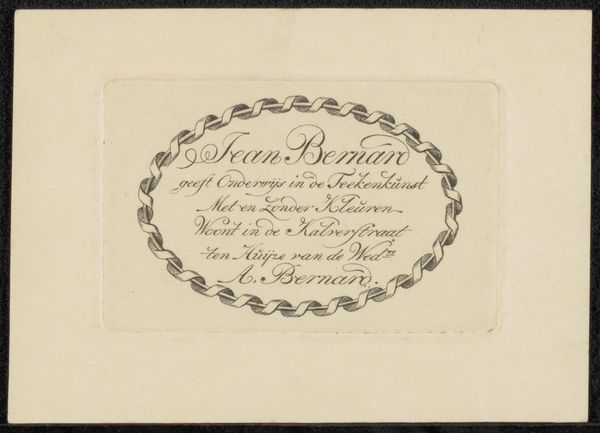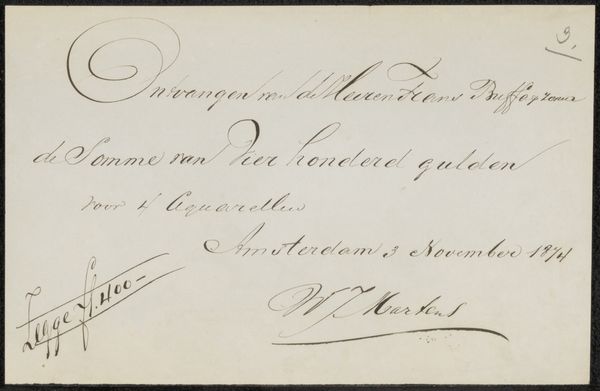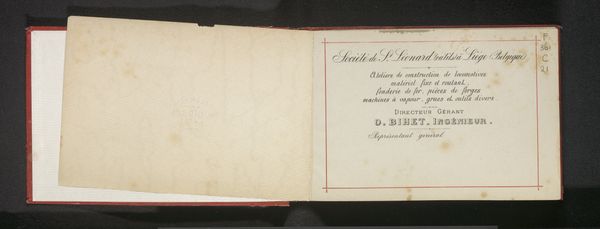
drawing, graphic-art, paper, ink
#
script typeface
#
drawing
#
graphic-art
#
script typography
#
hand-lettering
#
old engraving style
#
hand drawn type
#
hand lettering
#
paper
#
ink
#
hand-drawn typeface
#
thick font
#
handwritten font
#
golden font
#
calligraphy
Copyright: Rijks Museum: Open Domain
Curator: We are looking at “Uitnodiging aan Philip Zilcken,” a piece dating from 1867 to 1902 by Marie-Laetitia Bonaparte-Wyse. It's an invitation crafted with ink on paper, showcasing her talent for calligraphy. Editor: Oh, how wonderfully vintage! I adore the elegance of the script. It’s so restrained and refined—makes me think of hushed drawing rooms and furtive glances over steaming teacups. Curator: Indeed. It's important to note the context of this invitation. Marie-Laetitia, using her connections within Parisian literary circles, fostered these kinds of gatherings, subtly wielding influence. The invitation isn't just an invitation; it's a power play disguised as hospitality. Editor: Power play? Well, I prefer to think of it as sophisticated networking! All that beautifully looping text hides a little barb for sure, or perhaps some strategically positioned literary bombs set to explode over coffee and petit fours. Curator: Precisely! The “Nouvelle Revue Internationale,” mentioned prominently, was at the heart of intellectual discourse, and controlling the guest list meant shaping that discourse. The casual mention of the weekly dinners for "rédacteurs et collaborateurs" at 23, Boulevard Poissonnière underscores the Revue's significance in Parisien cultural life. Editor: Boulevard Poissonnière. Even the address drips with sophistication! But focusing back on the lettering—it’s exquisite, though slightly... menacing, almost daring you to RSVP no, dare you be absent! Curator: The calligraphic style aligns with the era’s emphasis on formality and grace. However, these forms, though ornamental, could also enforce social hierarchy. By dictating who was "in," they inevitably marked who was out. Editor: Hmmm...it also seems that, through the craft of invitation, Wyse is revealing to us that all that appears as refinement, as style, and good taste can be a mechanism of exclusion. What do you think Zilcken made of it all? I wonder, did he accept? And if so, was he thrilled or anxious to attend? Curator: I think exploring the nuances of invitation, then and now, opens up broader dialogues about belonging, access, and cultural capital. Editor: And who knew all of that could be captured in ink on paper, slipped silently into an envelope? I feel invited to keep looking.
Comments
No comments
Be the first to comment and join the conversation on the ultimate creative platform.

